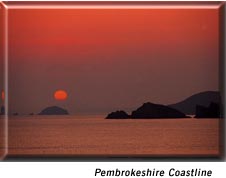 |
 |
When an odour is inhaled it impinges on the OLFACTORY EPITHELIUM which contain some 30 million nerve endings. The odour is transmuted into a nerve message, which is amplified by the OLFACTORY BULB and then passes along the olfactory tract and enters the LIMBIC SYSTEM.
The odour/nerve message is first analysed by the AMYGDALA and HIPPOCAMPUS which are memory centres and also play a major role in emotional responses. At this point the odour may trigger a memory, whether recent or distant.
The message is then passed on to the HYPOTHALAMUS which acts as a regulator and relay station, with the option of sending messages on to several other parts of the brain.
Euphoric odours, such as Grapefruit, tend to stimulate the THALMUS to secrete neurochemicals called ENKEPHALINS. These incidentally act as pain-killers, but also induce feelings of well-being, or euphoria, making us feel uplifted.
Aphrodisiac odours, such as Ylang-Ylang, result in stimulation of the PITUITARY GLAND which then may secrete ENDORPHINS. These are also pain-killers, and can induce both euphoria and sexual feelings. The pituitary gland also governs the other endocrine glands in the body, including the thyroid, the adrenals, and the sexual glands.
Sedative odours, such as Marjoram cause the brain to stimulate the RAPHE NUCLEUS which then releases SEROTONIN, a sedative neurochemical. Stimulating oils such as rosemary affect the LOCUS CERULEUS, which then releases NORADRENALINE into the brain. This has the effect of wakening us up.
CHAMOMILE MAROC (ormenis multicaulis/anthemis mixta) is different chemically, although same family, from blue GERMAN/MATRICARIA or 'true' ROMAN/NOBILIS and should not be considered a substitute. Not to be confused with great mugwort/'blue chamomile'.
TAGETES for bunions, corns and fungal infections should not be confused with 'true' marigold, CALENDULA, which is excellent for all skin conditions, most often used as an ointment or infused oil/phytol. In India, tagetes mixed with sandalwood produces Attar Genda perfume.
AMYRIS (candlewood) is a cheap substitute for SANDALWOOD but is no relation. It is the citrus/rue family (Rutaceae). Also TANGERINE/MANDARIN are identical to each other. And PETITGRAIN/BIGARADE is from the same tree as NEROLI/BIGARADE/ORANGE BLOSSOM (BITTER ORANGE). BERGAMOTIER is BERGAMOT PETITGRAIN, MANDARINIER is TANGERINE PETITGRAIN. SWEET ORANGE produces an inferior NEROLI/ORANGE BLOSSOM. BERGAMOT may be obtained bergapten-free.
OTTO or ATTA/ATTAR OF ROSE (ROSA DAMASCENA/BULGARIAN ROSE Turkish), or ROSA CENTIFOLIA/CABBAGE ROSE/MAROC French, is blended with SANDALWOOD in India to produce AYTAR perfume, but sometimes used for toothpaste in India and Sri Lanka.
CANANGA is related to YLANGYLANG but is considered inferior. YLANGYLANG is made into several distillates. EXTRA is the top grade followed by 3 further distillates, grades 3, 2 and 1. A 'complete' oil is also produced whichrepresents the total or 'unfractionated' oil, but this is sometimes constructed by blending 1 and 2, which are the 2 least popular grades.
COPAIBA is related to the BALSAMS and liquorice.
DAMIANA (turnera diffusa/turnera aphrodisica) as its name implies is an excellent oil to burn in the bedroom. A Native American herbal remedy.
ELEMI is closely related to MYRRH, FRANKINCENSE/OLIBANUM, LINALOE and OPOPANAX.
OPOPANAX (sweet myrrh) is different from opopanax (sweet acacia/gum arabic, Attar of Cassie perfume), which is MIMOSA/wattle family.
LITSEA CUBEBA/MAY CHANG/CORKWOOD - antiseptic, deodorant, digestive, disinfectant, insecticidal, stimulant, stomachic. Known as 'exotic' or 'tropical' verbena but not related to LEMON VERBENA, or vervain. It is the same family as ROSEWOOD/BOIS DE ROSE/, LAUREL, CINNAMON, cassia, camphor/hon-sho/HO LEAF and sassafrass/ohba-kusu.
CUBEBS is related to BLACK PEPPER, (respiratory/genito-urinary).
GALANGAL is related to GINGER and CARDOMOM (Zingiberaceae).
GALBANUM, a gum used in incense, and ASAFETIDA (often adulterated), are the family of FENNEL, CELERY, CARROT, DILL, ANGELICA, CARAWAY, CORIANDER, LOVAGE, CUMIN, PARSLEY and ANISEED (Umbelliferae).
STAR ANISE is a different family but same properties as ANISEED (respiratory/digestive/rheumatism/immune).
LAVANDIN is a hybrid of LAVENDER and SPIKE LAVENDER.
LINDEN/LIME (TILIA VULGARIS) is used as an infusion, tilleul, extensively by the French for its calming effect.
MANUKA is related to KANUKA, similar to TEA TREE (anti-viral).
CAJAPUT (white wood) is related to TEA TREE, NIAOULI, EUCALYPTUS varieties, MYRTLE and BAY (WEST INDIAN/BAY RUM not LAUREL).
CALAMUS (sweet myrtle/sweet flag) is different chemically to MYRTLE, it's TOXIC.
PISTACHIO/LENTISQUE is the mastic tree.
SPIKENARD/NARD is related to VALERIAN, and used as a substitute.
SWEET MARJORAM/ORIGANUM MARJORANA is different to oregano vulgare, which is toxic. They are related to LAVENDER, MELISSA/LEMON BALM, the MINTS, BASIL, PATCHOULI, ROSEMARY, SAGE, HYSSOP, catnip, savory, THYME.
WHITE THYME is a further distillation or rectification of RED THYME (THYMUS VULGARIS); 'thymol' and 'carvacrol' types are warming and active: 'thuyanol' is penetrating and anti-viral: 'linalol' and 'citral' are milder, sweeter, non-irritant chemotypes. English WILD THYME is also known as SERPOLET.
VETIVER/VETIVERT/KHUSKHUS is the same family as LEMONGRASS and CITRONELLA. Known in India as "The Oil of Tranquility".
VIRGINIAN CEDARWOOD is the CYPRESS, JUNIPER, CADE, thuja (TOXIC) family (Cupressaceae). ATLANTIC CEDAR is the PINE, TURPENTINE/TEREBINTH, spruce, hemlock, fir family (Pinaceae).
Copyright p.gent (1997)
BACK to main page
THALASSOTHERAPY
COMPLEMENTARY THERAPY for ADDICTIONS

  |